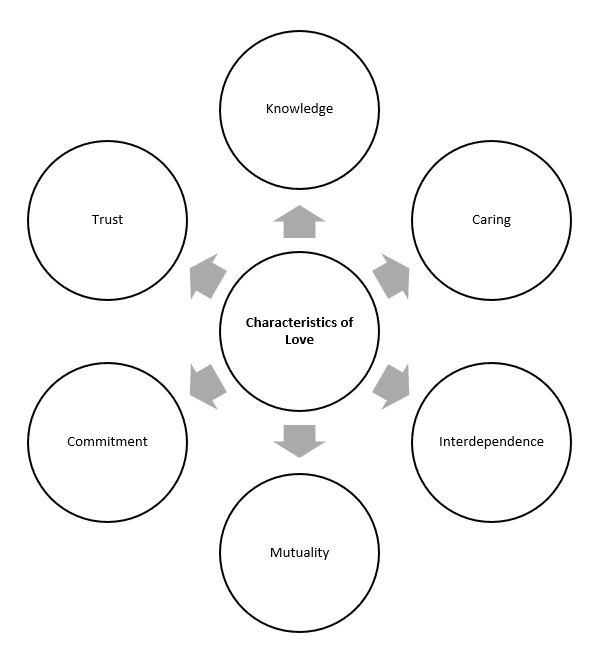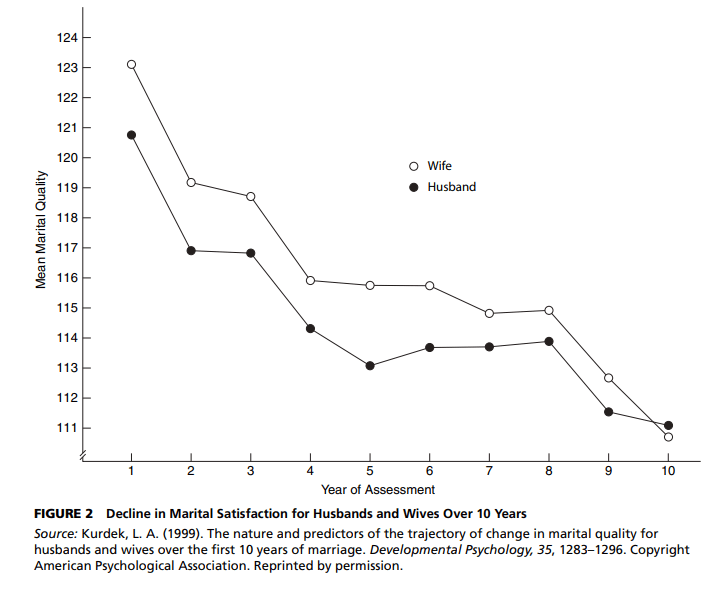Why are Love, Attachment, and Flourishing Relationships Important?
Human beings are inherently social creatures, and close relationships are essential to well-being and happiness. Relationships offer joy and satisfaction, and they have significant effects on both physical and mental health. Studies show that close relationships positively impact life satisfaction, resilience, and overall happiness (Myers, 1992).
The “belongingness hypothesis” posits that humans have a fundamental drive to form and maintain lasting, positive relationships with others (Baumeister & Leary, 1995). This theory suggests that belonging is as vital to human survival as basic needs like food and water (Diener & Diener, 1995).
Attachment plays a foundational role in forming these bonds. Evolutionary biology suggests that human attachment behaviors stem from survival needs; early humans’ social groups ensured protection and mutual support. Similarly, the biological hormone oxytocin, sometimes referred to as the “cuddle hormone,” is associated with bonding and attachment, reducing stress and creating calm feelings when people engage in physical contact like hugging or touching (Taylor et al., 2000; Hazan et al., 2006). Oxytocin’s effects underscore that our drive for attachment is not purely psychological but is also biologically ingrained, impacting how individuals feel secure and valued in their connections with others.
Read More- Happiness
Characteristics of Flourishing Relationships
Close relationships differ from acquaintances or casual connections in several ways, with specific characteristics distinguishing fulfilling, intimate relationships. According to Miller, Perlman, and Brehm (2007), six core traits define close, flourishing relationships are-

Characteristics of Love
- Knowledge- This entails sharing and understanding personal information. Mutual self-disclosure allows partners to connect on a deeper level, developing what Altman and Taylor (1973) describe as “depth and breadth” of self-knowledge. Research has shown that self-disclosure increases liking and affection, fostering a feeling of closeness (Collins & Miller, 1994).
- Trust- Trust involves confidence that the other person will act in the relationship’s best interest, preserving each other’s vulnerabilities. Trust fosters security, making self-disclosure possible and reducing fears of betrayal or harm. Studies confirm that trust is critical to lasting relationships, where breaking confidences can lead to emotional distance (Jones et al., 1997).
- Caring- This implies genuine concern for each other’s welfare and includes expressions of affection, empathy, and support. Caring is a key motivator for maintaining relationship quality, as people tend to prioritize close relationships over others, investing time and effort in nurturing these bonds (Berscheid & Reis, 1998).
- Interdependence- In close relationships, partners’ lives become intertwined, mutually influencing each other’s feelings, decisions, and behaviors. This feature is significant because it reflects the degree to which each partner values the other’s opinion and presence, integrating each other into their life decisions (Reis & Patrick, 1996).
- Mutuality- This sense of “we-ness” or shared identity distinguishes flourishing relationships, reflected in inclusive language (e.g., “we” rather than “I”). Mutuality develops as partners increasingly view each other as part of themselves, enhancing closeness and connection (Fitzsimons & Kay, 2004).
- Commitment- Commitment reflects dedication to staying in the relationship through highs and lows, embodying faithfulness, loyalty, and perseverance (Fehr, 1988). It implies a promise to continue nurturing the relationship, even during challenging times, making it an essential factor in long-term relationship success (Miller et al., 2007).
Each characteristic plays a unique role, but together, they create a foundation for long-term satisfaction and stability, allowing individuals to feel known, valued, and supported.
Types of Relationships- Exchange vs Communal Relationships
In addition to specific traits, relationships also vary in nature, generally categorized as exchange or communal relationships (Clark, 1984; Clark & Mills, 1993). Exchange relationships are often seen in the initial stages of acquaintanceships or formal partnerships, where favors and benefits are exchanged with an expectation of reciprocity. These relationships maintain a balance of “give and take,” with individuals tracking who contributes what.
In contrast, communal relationships are marked by emotional closeness and a focus on mutual support without expecting immediate reciprocation. Close friends, family members, and romantic partners are more likely to adopt a communal orientation, where actions are guided by each other’s needs rather than strict reciprocity. In a communal relationship, partners provide help or support out of genuine care rather than obligation, making these relationships feel more emotionally fulfilling (Clark & Mills, 1993).
Types of Love- Passionate vs Companionate Love
Love manifests in various forms, with passionate and companionate love being the most commonly studied types. Passionate love, often seen at the beginning of romantic relationships, is characterized by strong emotional arousal, sexual desire, and sometimes idealization of the partner. This love is intense but typically declines over time, making way for companionate love (Hatfield, 1988).
Companionate love represents a calmer, more stable form of affection based on deep friendship, mutual respect, and commitment. Often seen in long-term relationships, companionate love creates a bond where partners genuinely enjoy each other’s company and support each other without the intense highs and lows of passionate love (Hatfield & Sprecher, 1986). Both forms of love are important; while passionate love sparks initial attraction, companionate love sustains long-term relationships.
Sternberg’s Triangular Theory of Love
Sternberg’s Triangular Theory of Love proposes that love can be understood through three core components- intimacy, passion, and commitment. Each component plays a unique role in forming different types of love-
- Intimacy- Emotional closeness, connection, and bondedness.
- Passion- Physical attraction, romantic desire, and arousal.
- Commitment- The decision to stay with a partner and make a future together.
Different combinations of these components create various types of love-
- Liking (Intimacy alone) – found in friendships.
- Infatuation (Passion alone) – “love at first sight.”
- Empty Love (Commitment alone) – seen in stagnant relationships.
- Romantic Love (Intimacy + Passion) – intense but not necessarily long-term.
- Companionate Love (Intimacy + Commitment) – deep friendship, often in long-term marriages.
- Fatuous Love (Passion + Commitment) – a whirlwind romance without deep closeness.
- Consummate Love (Intimacy + Passion + Commitment) – the ideal, with all three components present.

Kinds of Love
Sternberg suggests that consummate love is rare and challenging to maintain, requiring ongoing effort to balance all three components.
Capitalization
Capitalization, or sharing positive life events with others, is an essential mechanism for strengthening relationships. Research by Gable et al. (2004) highlights that sharing positive experiences enhances happiness and well-being. Positive responses from partners, such as enthusiasm or joy for each other’s successes, amplify the emotional impact of these events, contributing to relationship satisfaction and closeness.
Gable’s studies reveal that partners who respond enthusiastically to each other’s good news experience higher relationship satisfaction. The concept of active-constructive responding—where partners show genuine interest and excitement—boosts the individual’s sense of joy, reinforcing the emotional bond between them (Gable et al., 2004). By celebrating each other’s accomplishments, couples create a positive feedback loop, fostering a sense of mutual support and validation.
Friendship vs. Romantic Love
While friendship and romantic love share qualities like trust and support, they differ in intensity, expectations, and emotional demands. Research shows that friendship rules—such as being supportive, trustworthy, and a source of enjoyment—are universally recognized across cultures and play a central role in determining friendship quality (Argyle & Henderson, 1984). Friendships provide companionship and support, but they lack the exclusivity and emotional intensity typical in romantic relationships.
Romantic love, distinct from friendship, is often driven by attraction and the desire for exclusivity. Societal expectations surrounding romance include loyalty, faithfulness, and commitment to emotional and physical exclusivity, creating a sense of “in love” rather than “just friends” (Meyers & Berscheid, 1997). Additionally, people generally expect romantic relationships to fulfill deeper emotional needs than friendships, often making romance more complex and demanding (Miller et al., 2007).
Marriage, Culture, and Expectations
Marriage, historically based on practical needs like financial security and social status, has shifted to prioritize love and emotional satisfaction. This shift toward “marrying for love” has led to higher expectations for personal fulfillment within marriage. Surveys indicate that Americans now view romantic love as the primary basis for marriage, with both men and women endorsing this perspective more strongly than in previous generations (Simpson et al., 1986).

Marital Satisfaction Over the Years
Yet, the emphasis on love as the foundation of marriage brings challenges. High expectations for emotional satisfaction can lead to disillusionment when these standards are unmet, potentially contributing to higher divorce rates (Berscheid & Campbell, 1981). Additionally, research shows that marital satisfaction tends to decline over time as initial passion wanes, highlighting the importance of fostering companionate love as a more enduring foundation for marriage (Kurdek, 1991).
Read More- Marriage and Happiness
Keys to a Flourishing Relationship
To cultivate a flourishing relationship, partners can engage in shared experiences that reinforce positivity and connection. Shared positive experiences increase life satisfaction and resilience, providing partners with mutual support during life’s ups and downs. According to Fredrickson’s broaden-and-build theory, positive emotions expand individuals’ thinking and create enduring personal resources, suggesting that couples who frequently share joyful moments have stronger emotional foundations (Fredrickson, 2001).
Adaptability and Acceptance are also essential. Long-term relationships benefit from realistic expectations, emphasizing friendship and companionship over sustained passion. Research by Gottman and Silver (1999) suggests that humor and compatibility are vital to resolving conflicts and maintaining satisfaction. Couples who can laugh together, even in difficult times, often develop a resilient bond, navigating challenges with mutual support and understanding.
Conclusion
Attachment, love, and flourishing relationships are central to human happiness and well-being. From the evolutionary importance of social bonds to the psychological and biological benefits of close relationships, it’s clear that connecting with others enriches life. Flourishing relationships are characterized by deep intimacy, trust, commitment, and shared positive experiences, with friendship and companionate love providing the foundation for long-term satisfaction. While passionate love sparks attraction, sustainable relationships rely on mutual respect, shared values, and adaptability, creating a lasting source of joy and resilience in life’s journey.
References
Baumgardner, S. R., & Crothers, M. K. (2009). Positive psychology. Pearson Education.
Sternberg, R. J. (1986). A triangular theory of love. Psychological Review, 93(2), 119–135.
Gottman, J. M., & Silver, N. (1999). The seven principles for making marriage work. Three Rivers Press.
Subscribe to Careershodh
Get the latest updates and insights.
Join 16,641 other subscribers!
Niwlikar, B. A. (2024, December 12). Attachment, 8 Types of Love & Flourishing Relationship. Careershodh. https://www.careershodh.com/flourishing-relationship/
